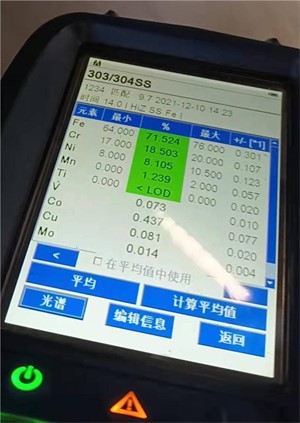304 Stainless Steel Plate For Chemical Industry Exported To Colombia
Feb 27, 2023
ASTM A240 304 304L Stainless Steel Plate
304 stainless steel plate is a heat resistant and anti-rust steel for general use. The 304 stainless steel plate is austenitic, which means it will not attract or hold a magnet. 304 steel plate is a type of austenitic stainless steel that is widely used in various industrial and commercial applications due to its excellent corrosion resistance, high strength, and good formability. Contains high levels of chromium and nickel, which provide excellent corrosion resistance, particularly in acidic environments.
304 is the most versatile and widely used of all the stainless steels. Its chemical composition, mechanical properties, weldability, and corrosion/oxidation resistance provide the best all-round performing stainless steel at relatively low cost. It also has excellent low temperature properties and responds well to cold work hardening. If there is a possibility of intergranular corrosion in the heat affected zone, 304L is recommended.

304 steel plate is commonly used in various industries, including food processing, chemical, petrochemical, and pharmaceutical. It is also used in the manufacture of kitchen appliances, automobile parts, and building materials. Standard sizes for 304 steel plate are 4' x 8' and 5' x 10', and it is available in thicknesses ranging from 0.025-inch to 4-inch. It can be supplied in a variety of finishes including brushed, satin and mirror.
Grades 304 and 304L stainless steel plate is available in coil plates and plate mill plates at HT PIPE. A wide range of plate sizes are available for purchase. We typically stock 304 and 304L stainless steel coil plates in widths including 36”, 48”, 60”, 72” and 2 meters (78.74”). Stainless Steel Plate Coil is typically stocked in 96”, 120”, 144” and 240” lengths. Non-standard lengths of plate coil can be custom leveled. 304 and 304L Plate Roll Sheet is also available for purchase, in 48”, 60”, 72” and 2 meter widths, along with 84”, 96” and 120”. Plates are 96”, 120”, 144” and 240” in length, but custom lengths are often available.
Chemical composition of ASTM A240 304 and 304L Stainless steel plate
Although 304 and 304L stainless steel plates have similar chemical properties, there are some notable differences. For starters, 304 stainless steel plate is made up of a maximum of 0.08% carbon. The 304 stainless steel plate also includes a maximum of 2.0% manganese and 0.75% silicon. it also contains no more than 0.045% phosphorus, 0.03% sulfur and between 18.0% and 20% chromium. 304 stainless steel plate is also made of 8.0% to 10.5% nickel and maximum 0.10% nitrogen. There are some key differences between 304 and 304L stainless steel plate. One of these key characteristics is the amount of carbon. 304 stainless steel plate is made up of no more than 0.08% carbon, while 304L stainless steel plate contains a maximum of 0.03% carbon. The other main difference in chemical composition between these two grades of stainless steel plates is the amount of nickel. 304L stainless steel plate can contain a maximum of 12.0% nickel, while 304 stainless steel plate can only contain up to 10.5%. These are the main differences between the two stainless steel plates. Both contain the same amount of manganese, silicon, phosphorus, sulfur, and nitrogen.

Mechanical properties of ASTM A240 304 and 304L
It is important to understand the mechanical properties of 304 and 304L stainless steel plates, ASTM A240. 304 stainless steel plate has a minimum tensile strength of 75 ksi and a minimum yield strength at 0.2% of 30 ksi. The 304 stainless steel plate has an elongation of 40%. This type of stainless steel plate has a maximum Brinell hardness of 201 and a Rockwell B hardness of 92. 304L stainless steel plate has a minimum tensile strength of 70 ksi and a 0.2% yield strength of 25 ksi. This stainless steel plate also has an elongation of 40%, a maximum hardness of 201 on the Brinell scale, and a hardness of 92 on the Rockwell B scale.

